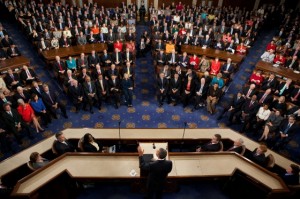 Yesterday, the country watched President Obama’s jobs speech to a joint session of Congress in which he unveiled the American Jobs Act – a $447 billion plan to stimulate job creation and put the economy back on the right track.
Yesterday, the country watched President Obama’s jobs speech to a joint session of Congress in which he unveiled the American Jobs Act – a $447 billion plan to stimulate job creation and put the economy back on the right track.
You can get the details of the American Jobs Act or view a graphical representation of the spending.
What excited me most about the the AJA is the ‘CAMEO’ bullet. CAMEO has been working for several years to convince the Workforce Investment System that self-employment is job creation and a viable option for the unemployed. Last year, we convinced the Department of Labor to issue a guidance letter and this year, the President included the following in his visionary jobs plan:
Starting a New Business: A number of States – including Delaware, Maine, Maryland, New Jersey, Oregon, and Pennsylvania – have self-employment assistance programs that encourage and enable unemployed workers to create their own jobs by starting their own small businesses. The President’s plan would allow states across the nation to support programs like these with federal UI funds, rewarding dislocated workers willing to strike out on their own and removing barriers that discourage participation in existing programs.
- This program, building on the goal of the President’s Startup America Initiative, will additionally enable states to connect entrepreneurs with mentoring and access to capital through SBA and other public and private resources.
- According to a Department of Labor study of state SEA programs, SEA participants were 19 times more likely than eligible non-participants to be self-employed at some point after being unemployed and 4 times more likely to obtain employment of any kind.
Richard Harmon at Townsend Public Affairs had this to say about the big picture:
The President emphasized the urgency of passing a jobs bill and asked Congress to end the gridlock and act on a measure in which “everything… is the kind of proposal that’s been supported by both Democrats and Republicans”. He repeatedly urged Congress to pass this bill right away.
Not included in the speech or the released materials was a plan to pay for the American Jobs Act, which the President has pledged will by fully paid for. The President plans to pay for the American Jobs Act through additional deficit reductions, above the $1.5 trillion the Congressional Deficit SuperCommittee is tasked with identifying. The President plans to present his full plan for deficit reduction, including how to fund the American Jobs Act, to the SuperCommittee next week.
The Speaker’s Office declined to offer an official response to the President’s speech. So far, Republican response has focused on reducing government spending, limiting federal creation of new programs (especially those in the purview of state government), and encouraging job creation by eliminating unnecessary government regulations.
